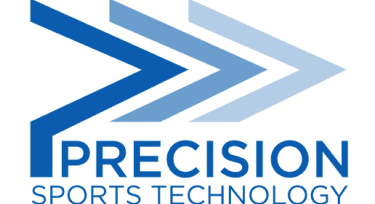Real-time feedback has become a critical component of performance management across many industries and elite sports performance is no different. Even at a basic consumer-athlete level, the internet of things has reshaped the fitness industry and pedometers like Fitbits and in-phone step trackers are now a part of daily life and spur users to do that little extra to maintain and improve their health.
Technology plays a huge role across sport with Hawkeye and goal-line technology often determining the outcome of competitions across a growing number of sports. Even though it might frustrate at times, the technology does lead to better outcomes - somewhere near to real-time.
The wide array of tech available to athletes today has changed the face of sport forever - completely disrupting how athletes think about and prepare for competition. Video analysis tools and analysis of game data has infiltrated virtually every professional sport with coaching strategies designed to leverage this data to improve outcomes. GPS trackers like STATSports can measure distance travelled by an athlete, average speed, intensity of play etc. Heart monitors track athlete pulse and breathing patterns and other wearable sensors can track other performance metrics aimed at giving athletes an advantage over the competition.
But does data motivate an athlete?
More data without a clear set of goals is essentially just noise. Data gathered through different sports technology tools is of little value if it can't be practically applied to achieving better outcomes for individual athletes and/or teams. So, where does the motivation come from?
Different theories exist on what motivates people including the Self-Determinant Theory (SDT) and Achievement Goal Theory which sports psychologists will consider throughout the evolution of sports careers and each individual will behave differently depending on their own circumstances e.g. age, injury history, role in a team or squad, fitness level etc.
Depending on how the individual athlete is motivated personally, coaches can apply different tactics to tap into those individual triggers. For example, real-time leaderboards in team training environments can introduce a competitive element to training and encourage athletes to try harder to outperform their peers and collectively challenge each other to improve upon their best efforts.
This kind of gamification is becoming increasingly prevalent in sports performance management in order to improve athlete engagement and enjoyment in training with studies showing it can improve athlete performance.
Visual cues from software like the Precision Sports Technology app can provide athletes with a timely reminder to adjust their position, encourage them to push themselves to a higher level of performance and can also help with visualisation - that guided mental rehearsal that helps elite athletes to focus. Tracking the progress of an athletes performance over time also gives them a goal to work towards and a quantifiable measure of improvement as it happens.
What about the real-time aspect of technology in sports training?
In practice, in most cases, sports scientists spend training and game time gathering data and then go away into a dark room to explore the data and come back with a set of recommendations for the teams or individual athletes but how real is the real-time element of this process? The data is gathered in 'real-time' but there is a feedback delay, a disconnect between the athlete's effort and the analysis of the recorded output - the feedback isn't real-time - the instantaneous course correction for the athlete is missing.

The next generation of technological feedback for athletes has to be immediate to maximise the impact. Fine margins in sport determine success and failure and that extra edge that technology provides is crucial.
With Precision Sports Technology, athletes can get real-time, accurate visual feedback on their movement using LIDAR camera technology (iPhone, iPad compatible) which helps with strength & conditioning training to improve athlete strength and mobility and reduce the likelihood of training. This gives elite athletes and aspiring elites a certain edge in competition - instant visual feedback on their movement, the opportunity to correct their mistakes in real-time to avoid injury, build strength and ultimately improve performance without needing to wait for an assessment or report. The app gives athletes with a longitudinal record of their movement and provides coaches with hassle-free measurement capabilities with no requirement for wearable sensors or dedicated monitoring environments.




